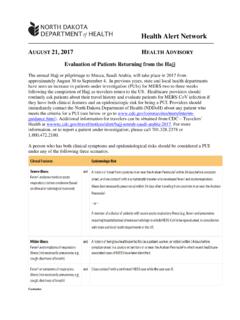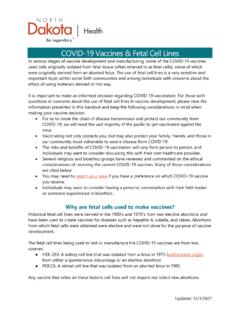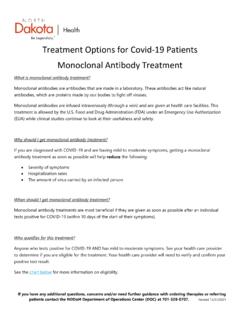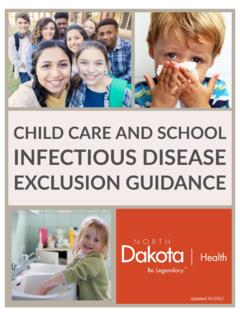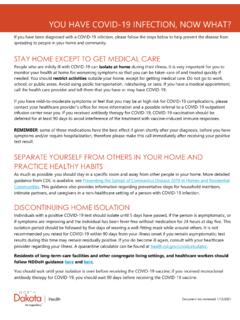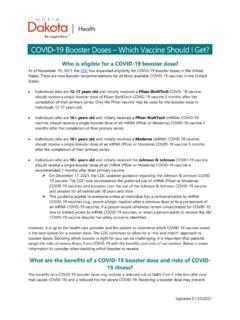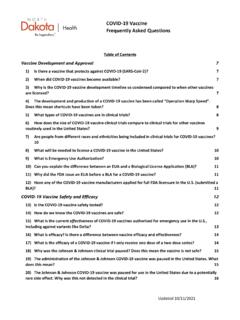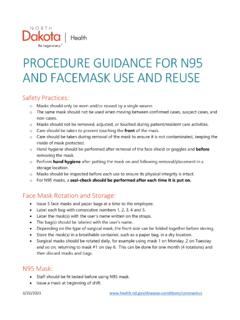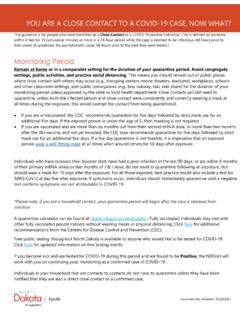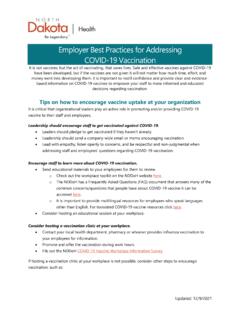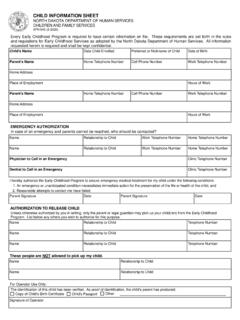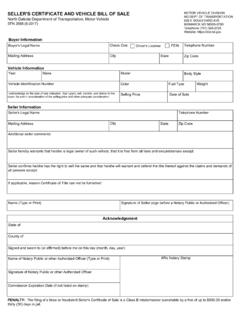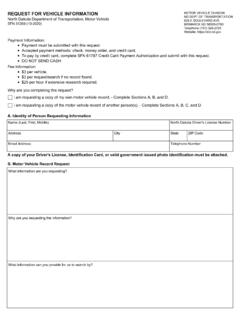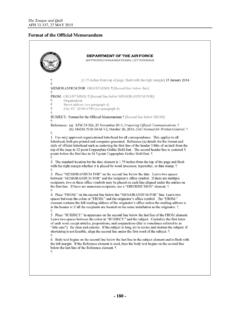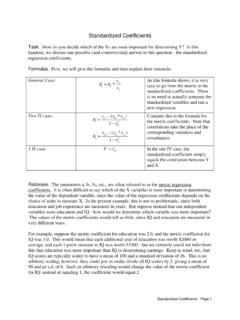Transcription of COVID-19 Testing: PCR, Antigen, & Serology
1 Updated 12/28/2021 Page 1 of 6 COVID-19 Testing: PCR, Antigen, & Serology There are three types of tests available for COVID-19 that can detect whether a person had it in the past ( Serology testing, which tests for antibodies against SARS-CoV-2, the virus that causes COVID-19 ), or whether they have it in the present (polymerase chain reaction (PCR) testing and antigen testing, which test for active infection). This document is designed to explain the differences between PCR, antigen, and Serology testing, and when one test might be used over another. This document was adapted from the Texas Department of State Health Services. Topic PCR Test Antigen Test Serology Test Why is the test used? PCR (molecular) tests look for the genetic material of the virus itself in the nose, throat, or other areas in the respiratory tract to determine if there is an active infection with SARS-CoV-2.
2 Antigen tests look for pieces of proteins that make up the SARSCoV-2 virus to determine if the person has an active infection. Serology looks for antibodies against SARS-CoV-2 in the blood to determine if someone has been infected in the past. Antibodies are formed by the body to fight off infections. IgM is the first antibody that is formed against a germ, so it appears on tests first, usually within 1-2 weeks. The body then forms IgG, which appears on tests about 2 weeks after the illness starts. IgM usually disappears from the blood within a few months, but IgG can last for years. Some antibody tests test for IgM and IgG, and some only test for IgG. Updated 12/28/2021 Page 2 of 6 Topic PCR Test Antigen Test Serology Test How is the test performed?
3 In most cases, a nose or throat swab is taken by a healthcare provider, and that swab is sent to the lab for testing. Testing can also be done with a Rapid Test in which results are available quickly, this is usually done within your doctor's office. In most cases, a nose or throat swab is taken by a healthcare provider, and that swab is sent to the lab for testing. Testing can also be done with a Rapid Test in which results are available within 15 minutes. In most cases, a blood sample is taken and sent to the lab for testing. What does a positive test mean? A positive PCR test means that the person being tested has the virus that causes COVID-19 . People who test positive should isolate for a minimum of 5 days if the person is asymptomatic, or if symptoms are improving and the individual has been fever free without medication for 24 hours at day five.
4 A positive antigen test means that the person being tested has the virus that causes COVID-19 . People who first test positive should isolate for a minimum of 5 days if the person is asymptomatic, or if symptoms are improving and the individual has been fever free without medication for 24 hours at day five. A positive antibody test means that the person being tested was likely infected with COVID-19 in the past and that their immune system developed antibodies to try to fight it off. There is no recommendation for isolation with a positive antibody test. If symptomatic, follow-up with a PCR or antigen test to determine if currently infected. Updated 12/28/2021 Page 3 of 6 What does a negative test mean?
5 A negative molecular test means that the SARS-CoV-2 virus was not detected. However, it doesn t rule out infection prior to the virus being at a detectable level. For people who are unvaccinated, the CDC recommends quarantine for five days followed by strict mask use for an additional five days. If the exposed person is under the age of 2, then masking is not required. For people who vaccinated and are more than six months out from their second mRNA dose, or more than two months after the J&J vaccine, and not yet boosted, the CDC recommends quarantine for five days followed by strict mask use for an additional five days. If a five day quarantine is not feasible, it is imperative that an exposed person wear a well-fitting mask at all times when around others for 10 days after exposure.
6 Individuals who have received their booster shot, have had a prior infection in the last 90 days, had a mask to mask exposure or are A negative antigen test means that SARS-CoV-2 viral proteins were not detected. However, it doesn t rule out infection prior to the virus being at a detectable level. If there is still concern that a person has COVID-19 after a negative antigen test, then that person should be tested again with a PCR test. For people who are unvaccinated, the CDC now recommends quarantine for five days followed by strict mask use for an additional five days. If the exposed person is under the age of 2, then masking is not required. For people who vaccinated and are more than six months out from their second mRNA dose, or more than two months after the J&J vaccine, and not yet boosted, the CDC now recommends quarantine for five days followed by strict mask use for an additional five days.
7 If a five day quarantine is not feasible, it is imperative that an exposed person wear a well-fitting mask at all times when around others for 10 days after exposure. A negative antibody test means that the person may not have had COVID-19 in the past. However, they could still have a current infection, and the antibody test was collected too soon to give a positive result. Updated 12/28/2021 Page 4 of 6 within 6 months of their primary mRNA series or two months of J & J dose, do not need to quarantine following an exposure, but should wear a mask for 10 days after the exposure. For all those exposed, best practice would also include a test for SARS-CoV-2 at day five after exposure.
8 If symptoms occur, individuals should immediately quarantine until a negative test confirms symptoms are not attributable to COVID-19 . Make sure to continue wearing a mask, stay at least 6 feet from others, wash your hands, avoid crowds, and take other steps to prevent the spread of COVID-19 . Individuals who have received their booster shot, have had a prior infection in the last 90 days, or are within 6 months of their primary mRNA series or two months of J & J dose, do not need to quarantine following an exposure, but should wear a mask for 10 days after the exposure. For all those exposed, best practice would also include a test for SARS-CoV-2 at day five after exposure. If symptoms occur, individuals should immediately quarantine until a negative test confirms symptoms are not attributable to COVID-19 .
9 Make sure to continue wearing a mask, stay at least 6 feet from others, wash your hands, avoid crowds, and take other steps to prevent the spread of COVID-19 . Updated 12/28/2021 Page 5 of 6 When is it helpful? It can be used to determine who has an active infection. It can help identify people who are contagious to others. It can be used to quickly determine who has an active infection. It can help identify people who are contagious to others. It is a less expensive than a molecular test. It can identify people who had an infection in the past, even if they had no symptoms of the illness. It can help determine who qualifies to donate convalescent plasma. It is helpful on a population level to determine how many people may have been infected with COVID-19 in a community or region.
10 It may be negative if it is used too close to the beginning of an infection, which is why it should not be used to detect active COVID-19 infection. Updated 12/28/2021 Page 6 of 6 When is it not as helpful? It only helps determine whether a person has an active infection at the time of testing. It does not help determine who had an infection in the past. It also does not help determine which people who have been exposed to COVID-19 will develop active infection during the 2 weeks after exposure. In some people, the virus can only be found by PCR for a few days at the beginning of the infection, so the test might not find the virus if the swab is taken more than a few days after the illness starts.
